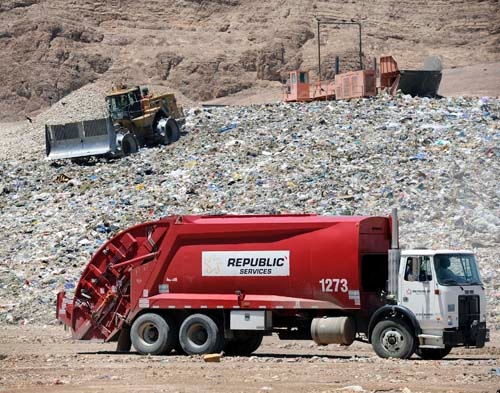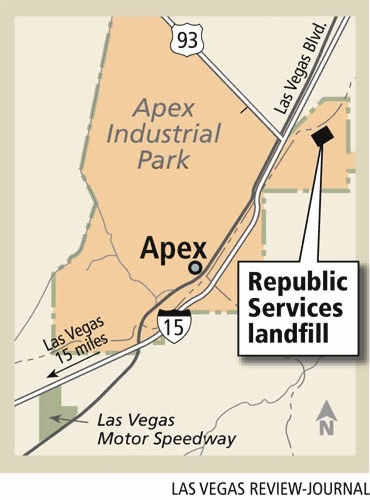Trash to power thousands of Southern Nevada homes



You might think about throwing out some extra garbage today. It’ll be good for the environment.
That’s because the trash you toss will power thousands of Southern Nevada homes via a new, low-emission natural gas electric plant.
NV Energy, Republic Services and New Jersey-based power developer Energenic dedicated the 12-megawatt plant Thursday at Republic’s landfill in Apex, about 20 miles north of Las Vegas. Energenic built and is operating the
$26 million plant, and NV Energy signed a 20-year agreement to buy electricity from the generating station, which is the 10th largest landfill-gas plant out of nearly 600 nationwide.
At peak capacity, the plant will make enough juice for 10,000 homes.
“The facility unveiling is a win for clean energy,” Energenic President and CEO Frank DiCola said. “Landfill gas-to-energy technology is a crucial component to our clean energy future.”
For NV Energy, the plant is also a milestone in its local renewables portfolio. Most of the utility’s Southern Nevada portfolio is solar power, an intermittent peak-electricity source that stops generating at night. The Apex station is a base-load plant, which means it runs 24/7 to provide electricity for NV Energy’s daily power demand.
“We’re getting some diversity throughout our portfolio,” said Bobby Hollis, NV Energy’s executive for renewable energy. “We’re getting away from solar and having other, nontraditional resource types.”
How’s landfill-gas nontraditional? For one thing, it comes from decomposing trash, while conventional natural gas comes from decomposing fossils. Then there’s landfill gas’s infrastructure. Energenic built eight miles of pipeline and 69 wells through, under and on the Apex landfill, and is adding more as the landfill spreads east and south. That means the plant’s output could double or triple over the life of NV Energy’s purchasing contract as the landfill, which has a 250-year life and accepts about 7,500 tons of trash a day, grows.
Rotting garbage can produce gas for 20 years, though peak output happens in the first decade, said Mark Clinker, general manager of the Apex plant.
Giant vacuums attached to the pipelines suck all of the gas out of the covered landfill. Because it’s only 50 percent methane, compared with 99 percent in natural gas, the landfill gas is piped through a treatment plant where technicians apply bacteria that eat pollution-causing sulfur molecules. The clean gas then goes to the power station, which operates like any power plant where burning natural gas spins a turbine, which in turn runs a generator. The Apex plant has two generators, though more can be added as the landfill expands.
The plant is considered renewable power because it uses a resource that would otherwise go to waste. Republic previously vented and burned it.
As the second landfill-gas plant built under the latest, tightest emissions controls from the U.S. Environmental Protection Agency, it’s also one of the nation’s cleanest, said Joe Burkel, Republic’s area president. And every megawatt generated through renewables means less power from dirtier technologies such as coal, Burkel said.
To keep things humming, the plant has eight employees – four Energenic workers who operate the station and four Republic Services staff members in the gas-treatment plant.
NV Energy didn’t disclose how much it will pay for power from the plant, but documents obtained by the Las Vegas Review-Journal in 2010 showed the company contracted to buy power from a similar, 3.2-megawatt plant near Reno for 8.1 cents per kilowatt hour. That was about twice what the company paid for wholesale power from traditional sources such as coal and natural gas, but less than it paid for all other renewables, including solar (13.2 cents to 13.5 cents), geothermal (8.6 cents to 10.3 cents) and wind (9.8 cents).
With the completion of the Apex plant, NV Energy has 1,100 megawatts of renewables in its portfolio. State law requires the utility to get 25 percent of its power from renewables by 2025. The company got 16.7 percent of its power from renewables in 2011, surpassing a 15 percent mandate.
NV Energy and Energenic said they don’t have specific plans for a third landfill-gas plant, though DiCola said Energenic is eyeing a landfill in Winnemucca.
Contact reporter Jennifer Robison at
jrobison@reviewjournal.com or 702-380-4512.












